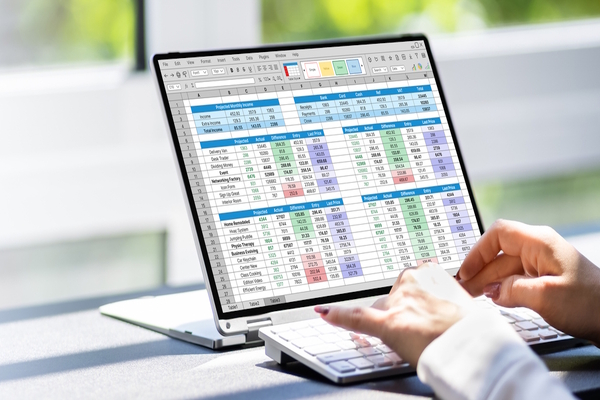Procurement transformation: How to streamline processes and boost efficiency
Sponsored by Amazon Business
The ultimate goal of a procurement team is to save the business money. Saving money typically results from negotiating better rates with suppliers or developing broader strategies to reduce spend, making better use of budgets, saving time, and reducing supply chain risk.
Yet while it is relatively easy to identify the potential for savings from big-ticket spend categories and a relatively small number of suppliers – and demonstrate returns as a result – it can be much harder to do this with so-called tail-end spend. This refers to the ad hoc money spent throughout the organization with large numbers of suppliers across multiple different categories, often made by individual employees outside of procurement’s remit. The high number of transactions can make it hard to keep track of what is spent and with whom.
In order to drive strategic and cost-cutting initiatives, procurement teams need to know what was spent and with which supplier, when and why. In the current uncertain economic climate, with businesses under more pressure than ever before, such intelligence is vital if organizations are to successfully keep costs under control and mitigate price increases. But without accurate, real-time data on these high-volume, low-spend purchases, it is impossible to make inroads into reducing unplanned spend.
Armed with this insights based on accurate data, procurement leaders can channel their organization’s unplanned spend into a smaller number of suppliers – making use of economies of scale – and deploy wider initiatives, such as sharing resources across the business or suggesting alternative products that could be used instead. It also offers the agility to respond to changing situations: to switch suppliers in the event of price increases or an increasing threat to viability or supply, or to prioritize suppliers from a particular background or with certain credentials. But none of this is possible without reliable data.
Many organizations are turning to Amazon Business to enable digital purchasing for a wide range of items quickly and cost-efficiently. Crucially, as well as providing access to business-only prices across multiple suppliers—in a format which is already familiar to millions of people -- the platform provides deep spend visibility and advanced analytics for those in procurement teams.
Businesses can access a wide range of pre-built reports covering data around orders, shipments, returns, refunds and reconciliation, and can also work with Amazon Business to build custom reports for deeper insights with Spend Visibility, a Business Prime benefit. Amazon Business can also integrate with over 100 different procurement or ERP systems, so procurement teams can improve visibility into their spending without disrupting their existing technology ecosystems.
This improved insight can then allow for further analysis and action. Armed with accurate data and tailored support from Amazon Business, procurement teams can then adjust or configure purchasing processes, reduce barriers across internal teams, and scale adoption to decrease disruption and maximize savings. For example, it might make sense to consolidate spend in a particular category with one supplier, or to examine whether such purchases are really necessary. It’s also possible to tie this into wider company priorities, by assessing how much is spent with small and local businesses, or from veteran-owned companies, for instance.
“Amazon Business is more than a digital purchasing solution – we’re a strategic business partner for procurement,” says Todd Heimes, Director and General Manager at Amazon Business. “We’re able to easily turn data into actionable insights to improve spend visibility. Having a holistic view of organizational spend and carrying out buyer analysis helps businesses identify savings and efficiencies, and can also help with environmental, social and governance goals.” An example here would be to identify how much money is spent with local suppliers, and to mandate local suppliers as preferred option for all spend in that category using Guided Buying (a Business Prime feature) to support businesses in the area and reduce carbon emissions associated with delivery.
Making use of Amazon for Business also allows organizations to control spend in the first place. As well as restricting who can make purchases, it’s possible to cap the total amount of money that is spent or to impose spending limits on particular categories. Any requests beyond this can then be flagged up for approval by the procurement team. Larger orders can be sent out to a range of suppliers, with a request for a quote, which can then result in further savings.
Already, more than six million businesses are using Amazon for Business, which started up in 2015. These range from small and medium-sized companies like the family-owned Red River Brewing Company in New Mexico to Fortune 100 businesses.
One company benefiting from savings and greater visibility into its buying habits is the United Service Organizations (USO), which helps to provide support to women and men serving in the US military. With 250 locations, the organization needed a means to consolidate spend among fewer suppliers and to use spend information to improve efficiency and ensure value for money.
“Things like approving invoices and reconciling receipts for expenses used to take five to seven days, and now it takes two,” says Rick Quaintance, procurement lead at USO. “What used to be a manual process that took up much of our time is now almost entirely automated. This reduces processing times and allows us to provide autonomy to center directors to get what they need more quickly and efficiently.
“Further, this new integrated solution is also providing us greater visibility into spending across the USO, a key benefit for a global nonprofit organization that has to regularly report on how we’re using donor dollars across multiple time zones.” The C-suite demands greater growth, faster innovation, and leaner budgets to combat the effects from the past year and improve organizational performance. Procurement teams need to transform from a support role into a strategic driver for the enterprise. For tactics and approaches to cut costs, accelerate growth, and use actionable data to support transformation efforts, download "The Enterprise Procurement Playbook".
For more information on how Amazon Business can help your organization, visit business.amazon.com.

Business Reporter Team
Most Viewed
Winston House, 3rd Floor, Units 306-309, 2-4 Dollis Park, London, N3 1HF
23-29 Hendon Lane, London, N3 1RT
020 8349 4363
© 2025, Lyonsdown Limited. Business Reporter® is a registered trademark of Lyonsdown Ltd. VAT registration number: 830519543





